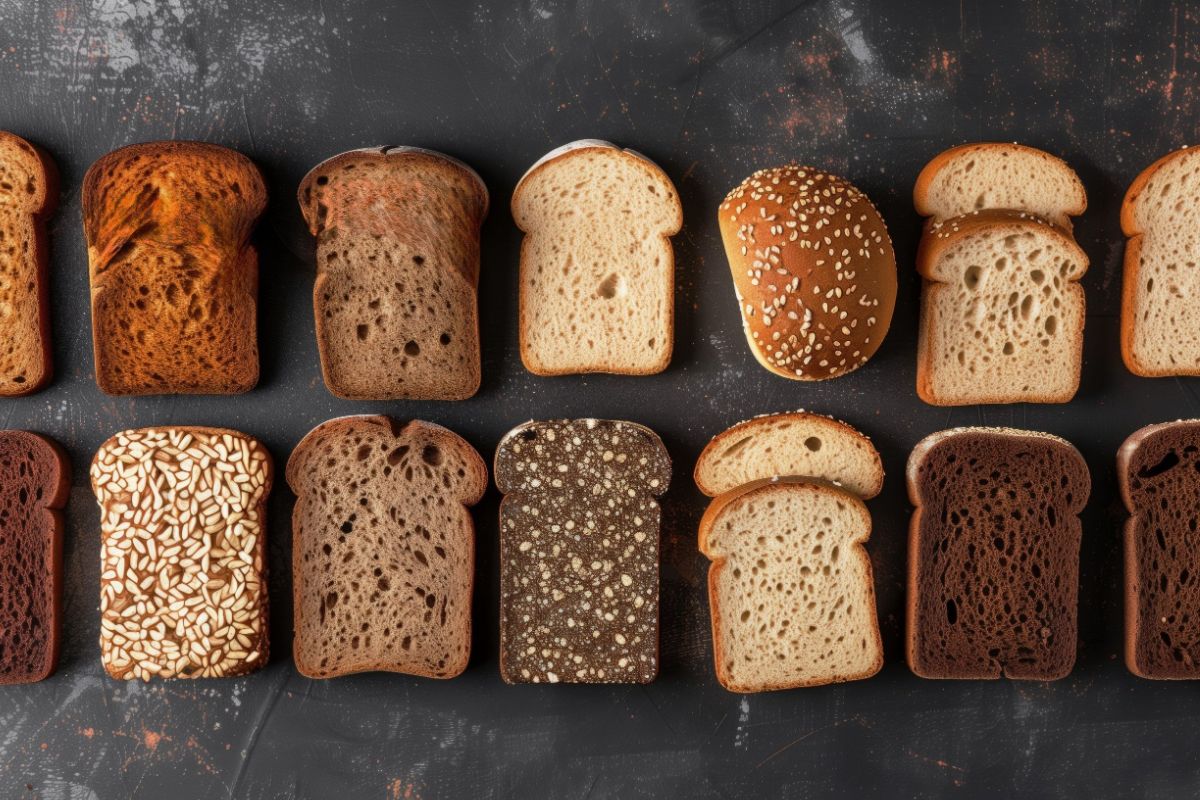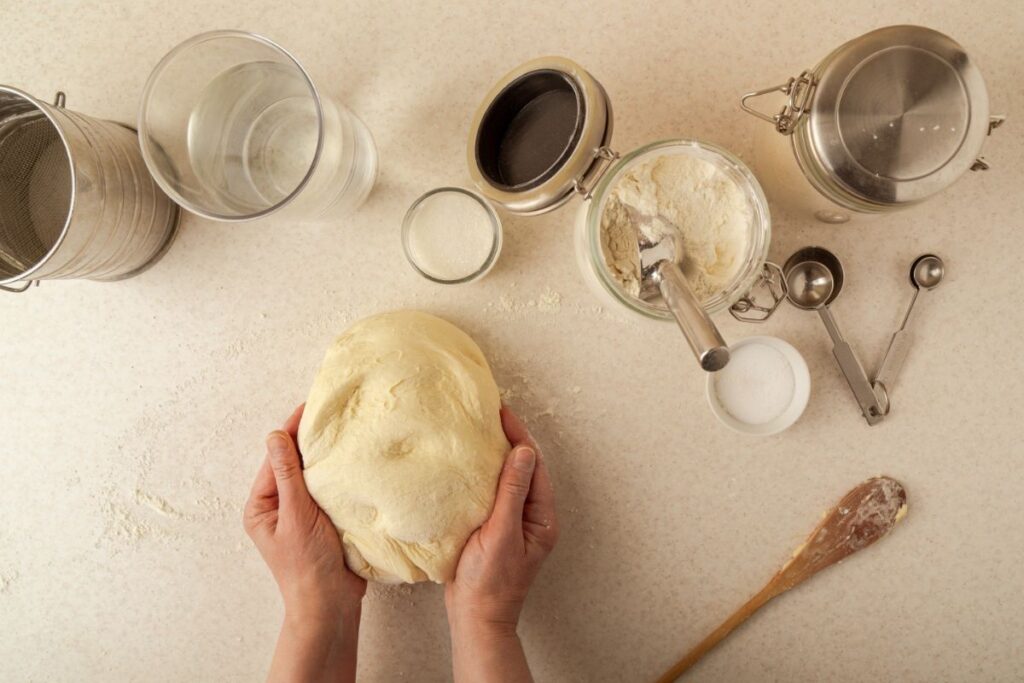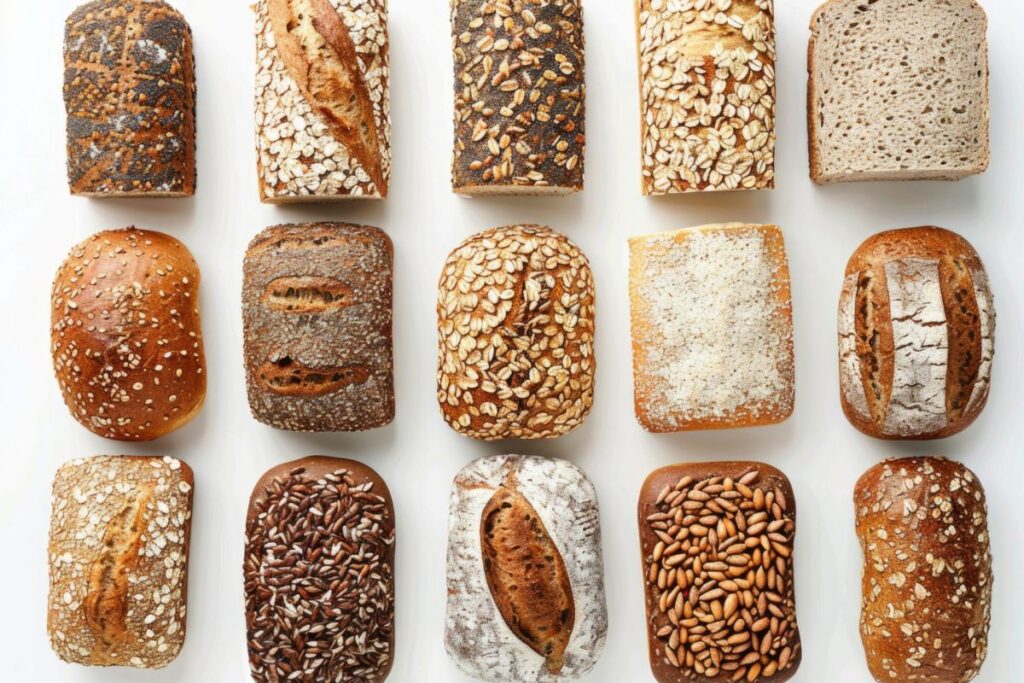Bread is a cornerstone of many cultures, symbolizing sustenance and community. From the humble loaf baked by ancient civilizations to the artisanal varieties lining modern bakery shelves, bread continues to be a staple in diets around the world. However, with the fast pace of today’s life, many people seek simplicity without compromising on quality. Enter 3 ingredient bread—a minimalist recipe that promises homemade bread with just flour, yeast, and water. This guide will walk you through everything you need to know about making 3 ingredient bread, from understanding the essential ingredients to exploring creative variations, troubleshooting common issues, and much more.
 The Rise of Minimalist Cooking
The Rise of Minimalist Cooking
In recent years, there has been a significant shift towards minimalist cooking, where the focus is on simplicity and the use of fewer ingredients. This trend is not just about convenience; it’s also about reclaiming control over what we eat. The popularity of 3 ingredient bread epitomizes this movement. By limiting the recipe to just three essential ingredients, bakers can avoid the preservatives and additives often found in commercial bread, resulting in a healthier, more natural product.
Minimalist cooking also aligns with the growing trend of clean eating, which emphasizes whole foods and minimal processing. For those who are passionate about maintaining a healthy diet, making bread with just flour, yeast, and water is a gratifying experience. It’s a simple recipe that anyone can master, even those who are new to baking.
If you’re interested in exploring more minimalist recipes, you might enjoy the Ultimate Guide to Making Pumpkin Fluff, a delightful treat that’s easy to prepare with just a few ingredients.
Ingredients Overview
The beauty of 3 ingredient bread lies in its simplicity. The recipe requires just three basic ingredients:
- Flour: Most recipes call for all-purpose flour or bread flour. All-purpose flour yields a tender crumb, while bread flour provides a chewier texture due to its higher protein content.
- Yeast: Active dry yeast is commonly used in this recipe, though instant yeast can be substituted. Yeast is the leavening agent that makes the dough rise.
- Water: Warm water is crucial for activating the yeast and forming the dough. The temperature should be between 110°F and 115°F to ensure proper yeast activation.
These ingredients are pantry staples, making 3 ingredient bread a convenient choice for any time you crave fresh bread. The simplicity of the ingredients also means that the flavor of the bread is pure and unadulterated, allowing the natural sweetness of the flour and the subtle tang of the yeast to shine through.
Step-by-Step Guide to Making 3 Ingredient Bread
Ingredients:
- 3 cups all-purpose flour or bread flour
- 1 packet (2¼ teaspoons) active dry yeast
- 1¼ cups warm water (between 110°F and 115°F)
Instructions:
- Activate the Yeast: Start by combining the warm water and yeast in a large mixing bowl. Allow the mixture to sit for 5-10 minutes until it becomes frothy. This indicates that the yeast is active and ready to work its magic.
- Mix the Dough: Gradually add the flour to the yeast mixture. Stir with a wooden spoon until a sticky dough forms. Be careful not to overmix; you want to keep the dough light and airy.
- Let the Dough Rise: Cover the bowl with a clean kitchen towel and let the dough rise in a warm, draft-free place for 1-2 hours, or until it has doubled in size. The rising process is essential for creating the soft, airy texture characteristic of well-made bread.
- Shape the Dough: After the dough has risen, gently punch it down to release excess air. Transfer the dough to a floured surface and shape it into a round loaf. Handle the dough with care to avoid deflating it.
- Preheat the Oven: Preheat your oven to 450°F (230°C). Place a Dutch oven or a heavy-duty pot with a lid inside the oven to heat up. This step is crucial for creating a crispy, golden crust.
- Bake the Bread: Carefully place the shaped dough into the preheated pot, cover with the lid, and bake for 30 minutes. Then, remove the lid and bake for an additional 10-15 minutes, or until the bread is golden brown and sounds hollow when tapped.
- Cool and Serve: Transfer the bread to a wire rack to cool completely before slicing. This allows the interior to set and prevents the bread from becoming gummy.
This recipe is foolproof and yields a loaf that’s both delicious and versatile. Whether you enjoy it fresh from the oven with a pat of butter or use it for sandwiches, 3 ingredient bread is sure to become a household favorite.
 Creative Variations of 3 Ingredient Bread
Creative Variations of 3 Ingredient Bread
While the classic 3 ingredient bread is delightful on its own, there are endless ways to customize the recipe to suit your taste. Here are some popular variations:
1. Whole Wheat 3 Ingredient Bread
For a more nutritious loaf, substitute all-purpose flour with whole wheat flour. Whole wheat flour is higher in fiber and nutrients, making it a healthier option. However, it also produces a denser loaf, so consider adding an extra tablespoon of water to achieve the desired dough consistency.
2. Self-Rising Flour Bread
If you’re short on yeast or time, you can make a quick bread using self-rising flour. This variation eliminates the need for yeast and rising time, making it ideal for spontaneous baking. Simply mix self-rising flour with water, shape the dough, and bake as usual. The result is a bread that’s light and fluffy with minimal effort.
3. Herb-Infused Bread
For a savory twist, try adding dried herbs such as rosemary, thyme, or oregano to the dough. These herbs add an aromatic flavor that pairs well with soups, stews, and roasted meats. You can also experiment with spices like garlic powder or cracked black pepper for added depth of flavor.
4. Sweet Bread
If you prefer a sweeter loaf, consider adding a tablespoon of honey, sugar, or maple syrup to the dough. This slight sweetness makes the bread perfect for breakfast or as a snack. Serve it with butter, jam, or nut butter for a simple yet satisfying treat. For a dessert-inspired twist, you might also enjoy baking these Perfect Mini Apple Pies alongside your sweet bread.
Troubleshooting Common Issues
Even with a straightforward recipe like 3 ingredient bread, you might encounter some challenges. Here’s how to address common issues:
Dough Doesn’t Rise
If your dough doesn’t rise, the yeast may be inactive. Ensure that your yeast is fresh and that the water used is warm (not hot), as excessively hot water can kill the yeast. Additionally, make sure the dough is placed in a warm, draft-free area during the rising process.
Bread is Dense
A dense loaf can result from overmixing the dough or not allowing enough time for it to rise. To avoid this, mix the dough just until the ingredients are combined, and give it plenty of time to rise until it doubles in size.
Crust is Too Hard
If your bread’s crust is too hard, it may be due to overbaking or baking at too high a temperature. To soften the crust, try covering the bread with a kitchen towel as it cools. The trapped steam will help soften the crust slightly, making it easier to slice.
For more tips on achieving the perfect texture in baked goods, check out the Ultimate Guide to Baking Perfect Oatmeal Raisin Cookies. While it focuses on cookies, many of the principles apply to bread as well.
Health Benefits of 3 Ingredient Bread
Making your own bread allows you to control what goes into it, which is particularly important if you’re mindful of your diet. Here are some of the health benefits of 3 ingredient bread:
1. Free from Preservatives
Unlike many store-bought breads that contain preservatives and artificial additives, homemade 3 ingredient bread is free from unnecessary chemicals. This makes it a healthier option for those who prefer natural, whole foods.
2. Low in Sugar and Sodium
Many commercial breads are loaded with sugar and sodium to enhance flavor and prolong shelf life. By making your own bread, you can control the amount of salt and eliminate added sugars entirely, making it a heart-healthy choice.
3. High in Nutrients
If you opt for whole wheat or other whole grain flours, your bread will be higher in fiber, vitamins, and minerals. These nutrients support digestive health and help maintain steady energy levels throughout the day.
4. Versatile and Customizable
Because you’re making the bread yourself, you can customize the ingredients to suit your dietary needs. Whether you need to make gluten-free bread, low-carb bread, or high-fiber bread, the basic 3 ingredient bread recipe can be easily adapted to meet your nutritional goals.
Serving Suggestions for 3 Ingredient Bread
Once you’ve baked your loaf of 3 ingredient bread, the possibilities for serving it are endless. Here are some delicious ways to enjoy your homemade bread:
Toasted with Toppings
Toast is a classic way to enjoy homemade bread. Top it with avocado, eggs, or smoked salmon for a savory breakfast, or spread it with butter and jam for a simple yet satisfying snack. You can also drizzle it with honey or nut butter for a touch of sweetness.
Sandwiches
Homemade 3 ingredient bread makes an excellent base for sandwiches. Its sturdy texture holds up well to a variety of fillings, from traditional deli meats and cheeses to vegetarian options like hummus and roasted vegetables. For a classic comfort food, try making a grilled cheese sandwich with your homemade bread.
Soup Companion
Serve your bread alongside soups and stews for a comforting meal. The bread’s crusty exterior makes it perfect for dipping into broths and soaking up hearty sauces. For a cozy winter meal, pair your bread with a bowl of tomato bisque or a hearty chicken soup.
Bread for Dipping
3 ingredient bread is ideal for serving as an appetizer or side dish. Cut the bread into slices and serve it with olive oil and balsamic vinegar for dipping. You can also pair it with a selection of cheeses, cured meats, and fresh fruits for a simple yet elegant charcuterie board.
If you’re looking for more inspiration, consider trying this Chicken Pot Pie with Crescent Rolls. The warm, flaky crust of the pot pie pairs beautifully with the rustic texture of homemade bread.
 FAQs About 3 Ingredient Bread
FAQs About 3 Ingredient Bread
Can I Use Gluten-Free Flour?
Yes, you can use gluten-free flour to make 3 ingredient bread. However, the texture will differ slightly, as gluten-free flour lacks the elasticity that gluten provides. Your bread may be denser and less chewy, but still delicious.
What If My Bread Doesn’t Rise?
If your bread doesn’t rise, it’s likely due to expired yeast or incorrect water temperature. Always use fresh yeast and ensure the water is warm but not hot (110°F to 115°F) to activate the yeast properly. If you’re still having trouble, try proofing the dough in a slightly warm oven or near a heat source to encourage rising.
How Should I Store My Bread?
Store your 3 ingredient bread at room temperature in a bread box or wrapped in a clean kitchen towel to keep it fresh. Avoid refrigerating the bread, as this can cause it to dry out quickly. For longer storage, slice the bread and freeze it in an airtight bag. Simply thaw and toast the slices as needed.
Can I Add Other Ingredients?
Absolutely! While the basic recipe calls for only three ingredients, you can easily customize the bread by adding extras like seeds, nuts, cheese, or dried fruit. These additions can enhance the flavor and texture of the bread, making it even more enjoyable.
What Is the Shelf Life of 3 Ingredient Bread?
Homemade 3 ingredient bread typically lasts for 2-3 days at room temperature. To extend its shelf life, consider freezing the bread. Slice it first, so you can easily thaw and toast individual pieces as needed.
Conclusion
3 ingredient bread is a testament to the idea that less can indeed be more. With just flour, yeast, and water, you can create a loaf of bread that is both delicious and versatile. Whether you’re new to baking or a seasoned pro, this recipe is easy to follow and yields consistently great results.
The simplicity of 3 ingredient bread doesn’t just make it convenient; it also allows you to control what goes into your bread, resulting in a healthier, more natural product. Plus, with the endless possibilities for customization, you can tailor the bread to suit your tastes and dietary needs.
If you’re ready to explore more easy and delicious recipes, why not try the Ultimate Guide to Perfect Mini Apple Pie Recipe or the Ultimate Guide to Baking Perfect Oatmeal Raisin Cookies? Both offer simple, crowd-pleasing treats that pair beautifully with your homemade bread.
In a world where convenience often comes at the cost of quality, 3 ingredient bread is a refreshing reminder that homemade is always better. By embracing simplicity, you can enjoy the wholesome goodness of freshly baked bread with minimal effort and maximum flavor.



